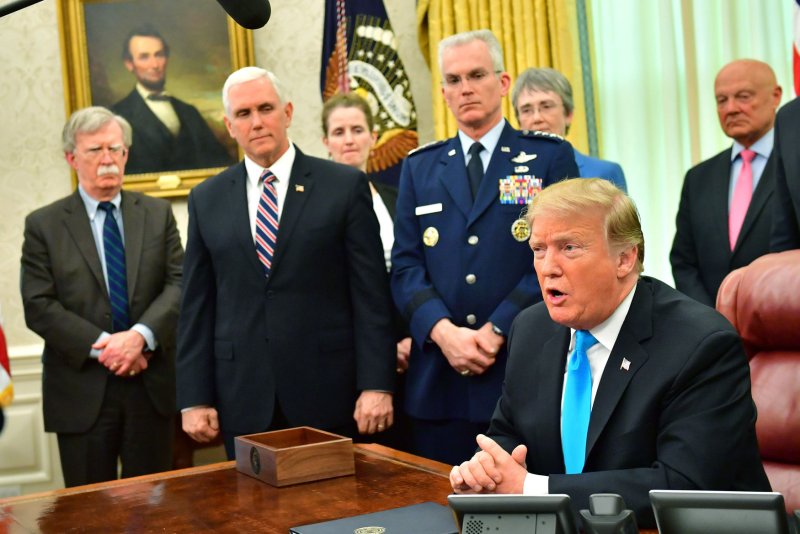1 of 3 | President Donald Trump speaks to the media after signing Space Policy Directive-4 in the Oval Office at the White House in Washington, D.C., on Tuesday. Photo by Kevin Dietsch/UPI |
License Photo
Feb. 19 (UPI) -- President Donald Trump signed a directive Tuesday ordering the Department of Defense to create the Space Force -- a sixth branch of the military -- initially as part of the Air Force.
The directive orders the Pentagon to put together legislation to present to Congress to create the Space Force. It would operate under the umbrella of the Air Force, much the same way the Marines work within the Navy. It would be managed by an Air Force undersecretary for space and have representation on the Joint Chiefs of Staff.
"Space, that's the next step and we have to be prepared," Trump said at the signing ceremony. "I think we'll have great support from Congress."
Funding for the Space Force will be included in Trump's 2020 budget proposal.
The president called for the creation of a Space Force in June.
As way of preparation for the military branch, he ordered the establishment of the U.S. Space Command in December. The command was expected take on all the general responsibilities of a Unified Combatant Command, the space‑related responsibilities previously assigned to the commander of U.S. Strategic Command, and the responsibilities of joint force provider and joint force trainer for Space Operations Forces.
Vice President Pence, speaking at Florida's Kennedy Space Center in December, said the command and Space Force would protect the United States from foreign weaponry.
"For years, foreign nations have been developing electronic weapons to jam, blind, and disable satellites," Pence said. "China and Russia are working to station new weapons directly in space and frankly these new challenges demand new and innovative responses, and that's precisely what we've been providing."
A Defense Intelligence Agency report published last week said China and Russia's advances in space technology pose a military challenge to the United States.
In 1967, the Outer Space Treaty banned the deployment of weapons of mass destruction into space or installing such weapons on celestial bodies. It has been ratified by more than 100 countries, including the United States, Russia, China and North Korea. Other weapons are not banned, as noted in the treaty and the later 1979 SALT II Treaty.
But that's not stopping Russia and China from military space technology developments.
China has demonstrated an anti-satellite missile and is working on a laser that could attack U.S. properties in space. Russia is focused on energy-weapons, including lasers or high-powered microwaves, that can disable or destroy objects in space.
Russia's mobile, ground-based weapon system "capable of destroying space targets is likely to be operational within the next several years," the DIA report warned.















